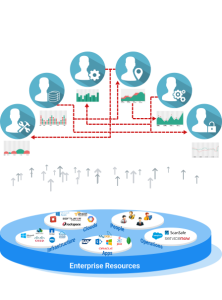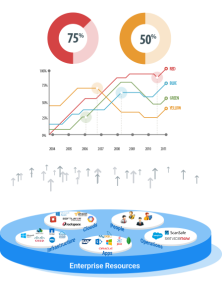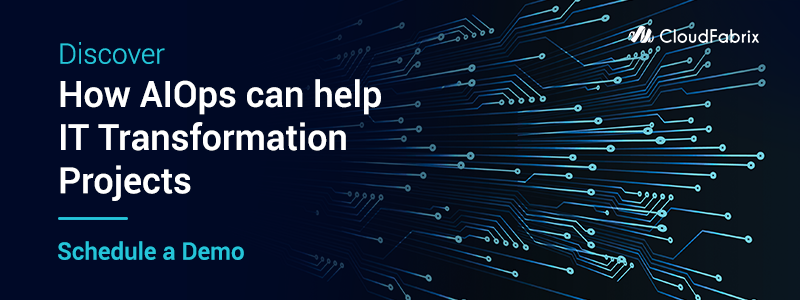In this current digital and cloud computing era, enterprises constantly need to address growing business demands by being strategic, agile and roll out new business models and services to remain relevant in their industry. Traditionally enterprises have address such growing demands by means of expanding their IT with new infrastructures, applications in geographies or sites. At the same time, in order to effectively manage and operate the IT deployment growth, enterprises have added more tools and more IT personnel. These tools are primarily focused around solving the problem for a given type of infrastructure or application or operational behavior. For example, network tools were focused around network configuration, security and performance. Application Performance monitoring tools were primarily focusing on application metrics and instrumentation. Operational tools focus around monitoring, change management etc. With this approach, IT departments have gradually started to grow into tools driven environments. However, pretty soon enterprises have realized these tools are from different vendors, typically operate in siloed fashion and have quickly become data islands that are not providing a common and unified view and intelligence for IT to continue the evolution. IT personnel ended up spending lot of time connecting and reconciling information/data from all these tools to debug or diagnose system problems. As IT environments witness more distributed apps and continuous data explosion, typical ITOM and ITSM are not able to cope up with the challenge and most of the times it is after the fact.

As traditional ITOM are not able to keep up with Hybrid IT as well as data explosion, Big Data analytics came to rescue and enabled IT Operational Analytics (ITOA) era. ITOA vendors have recognized this need and introduced innovative solutions that can analyze terabytes of IT operations data and turn into insights and intelligence. These ITOA systems work across many applications, infrastructures and sites and typically operate by integrating with underlying element management, domain management tools and get hold of data from multiple sources, index the data and provide insights, intelligence, through metrics, reports, dashboards and self-service options.

Essentially, ITOA has changed the game from tools driven IT to insights driven IT. Many different stakeholders benefited from ITOA.
- Businesses benefited by gaining broader visibility and insights into their IT environments and now are able to effectively identify areas where they need add more investments and areas where they need to reduce resources and cost. Businesses were able to improve customer satisfaction by reducing IT ticket volumes and wait times.
- IT departments are now able to holistically view and operate on data from multiple environments, resulting in faster reporting, troubleshooting and root cause analysis. IT was able to run analytics on the data and identify trends, patterns in applications, operations and customer behavior. This helped IT to identify anomalies as and when they are happening and remediate them in near realtime as opposed to reacting to these situations in aftermath. IT is able to implement pervasive security and with this renewed intelligence. Essentially, IT has become a strategic player to LoB departments and corporate initiatives.
- Customers benefited by using services and applications that are now more responsive and have fewer issues. Tickets were resolved quickly as the communication between employees and customers improved. Customers were able to get lot of intelligence and information through self-service portals. Customers realized faster innovations and new services as the vendors adopted insights driven ITOA systems in their overall IT operations.
It is abundantly clear how ITOA systems are changing the game and providing real significant benefits in this fast paced digital and cloud computing era. However, what’s intriguing to note is that even traditional ITOA systems are also falling short because they primarily show operational intelligence broadly and may be missing business and application context. It is sometimes after the fact too and most of the operational initiatives are issues typically cuts across multiple domains and layers.
In the next blog, I will share my thoughts on how the ITOA market is evolving and the need for next-generation ITOA systems.



